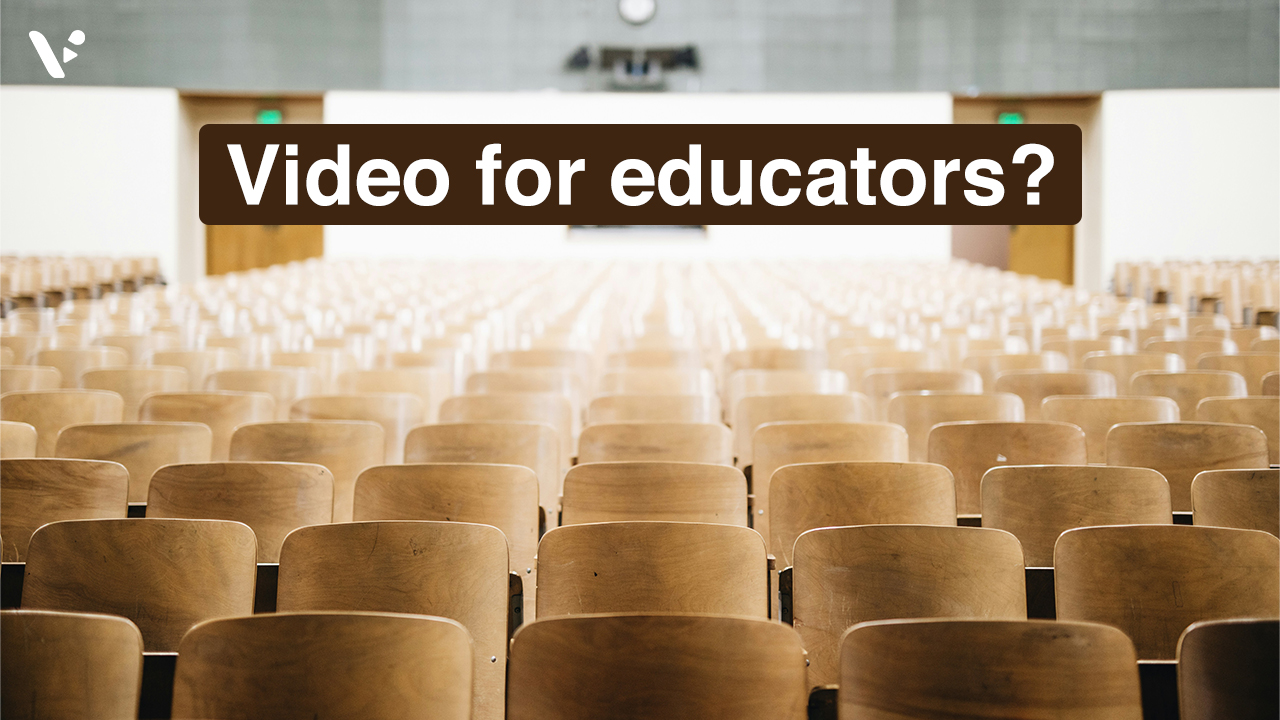In today’s classrooms and training rooms, the question isn’t whether video fits in, it’s how well we use it. With on-demand content, short attention spans, and students scattered across time zones, video has become an essential tool for modern educators. But does it actually work?
What Research Says About Video and Learning
Students retain 95% of a message when they watch it in a video, compared to 10% when reading text.
Video works because it taps into our brains’ natural love for visual and auditory information. A study by Kaltura found that 93% of students believe video improves learning outcomes. Additionally, the research confirms that short, engaging videos boost concept retention far more than textbooks alone.
Why? Because video personalizes learning. It gives students a chance to pause, rewind, or rewatch until they understand the material. Teachers can break complex ideas into bite-sized clips, helping everyone learn at their own pace. And when you add closed captions, voiceovers, and visuals, you create an inclusive environment that supports diverse learning styles.
The Problem: Time and Skills
Despite the clear benefits, educators face big obstacles. Many lack video editing skills or time to learn complicated software. Others struggle to keep content fresh or consistent. That’s where a purpose-built tool can change everything.
Enter the Visla Education Suite

What Is the Visla Education Suite?
Visla Education Suite bundles the best AI tools to help teachers, trainers, and learning teams produce high-quality video content — fast. Whether you want to record your lecture, convert slides to video, or collaborate with your department, Visla keeps everything under one roof.
Here’s what you get:
- Recording Tools: Capture your screen or webcam with speaker notes and a teleprompter. Use Screen Step Recording to turn clicks into tutorials automatically.
- AI Video Creation: Drop in a PDF or PPT and let Visla build a narrated explainer. Or paste a script and watch it transform into a polished video.
- AI Editing: Automatic subtitles, AI voiceovers (including your cloned voice), the Ken Burns Effect, and text overlays make videos feel professional without the hassle.
- Collaboration Tools: Teamspaces and Workspaces, your Private Stock Library, and shared editing mean you can co-create courses, keep branding tight, and reuse your best clips.
How Does It Help?
Visla tackles three educator pain points: time, skill, and reach. Instead of wrestling with complicated editors, you spend time teaching. Visla’s AI trims filler words, adds subtitles, and polishes footage automatically. Multilingual subtitles and voiceovers mean your lessons reach students globally, not just in your time zone.
Imagine recording a lesson today and having a polished, captioned, shareable video by tomorrow. No late-night edits. No missed deadlines. No burned-out teachers.
Why Educators Need It Now
Students expect content on demand. Parents expect consistency. Schools expect instructors to do more with less. Visla answers this pressure with an all-in-one video hub that grows with you.
University professors can reuse lectures semester after semester. Corporate trainers can update modules without re-recording entire courses. Language schools can expand into new regions using multilingual tools. Even bootcamps and e-learning startups can compete with bigger institutions by delivering polished, professional video lessons at scale.
How to Use Visla in 5 Simple Steps
- Record: Screen, webcam, or both. Use a teleprompter or step recording for clear delivery.
- Prompt: Upload a slide deck, PDF, or just type what you want. Visla’s AI handles the rest.
- Refine: Adjust length, style, and voice. Pick music and footage if needed.
- Edit: Add graphics, captions, overlays, and final touches in the Scene Based Editor.
- Share: Publish, grab a link, or embed your video directly in your LMS.
Who Uses Visla?
University Courses: Professors and teaching assistants record lectures and break down tough topics with engaging visuals. Students revisit lessons anytime.
Corporate L&D: Learning teams cut production time and keep training materials on-brand, no matter how fast company policies change.
Training Institutions: Bootcamps and certification programs create multilingual video lessons to reach more students.
Remote Educators: Online tutors and e-learning startups craft entire courses without hiring a big production crew.
Ready to Get Started?
If you want to free up your time, deliver professional content, and reach learners worldwide, it’s time to try Visla Education Suite. Sign up today and see how easy it can be to turn your knowledge into videos your students will love.
FAQ
Video taps both visual and auditory channels, improving cognitive processing and recall. Studies show shorter, structured videos boost student engagement and retention. Platforms like ViewSonic identify video as a key way to introduce new topics, vary materials, and support different learning paces. When paired with active learning (like embedded quizzes), video becomes far more effective than passive lectures.
The biggest hurdles include lack of time, technical skills, and consistency across lessons. Many teachers struggle with complex editing tools that require steep learning curves and long hours. As a result, some give up before videos reach students. That leaves untapped potential for reaching diverse learners and supporting flexible learning models.
Visla offers tools like AI‑driven script‑to‑video conversion and slide or PDF uploads that auto‑turn content into polished video . Built‑in AI editing features include subtitles, voice‑overs, and scene‑based trimming to eliminate filler content . It even allows voice cloning so educators can maintain a consistent tone across lessons. This automation frees teachers to focus more on pedagogy than post‑production details.
Yes, Visla supports shared Teamspaces and Workspaces that let educators co‑create, review, and comment on lesson videos. Collaboration tools help departments maintain consistent branding and quality across multiple sections or subjects. They allow roles like reviewers and editors to work together seamlessly online. This makes updating or scaling video courses faster and more efficient.
Short, on‑demand videos empower students to learn at their own pace, pausing or rewatching as needed. Features like auto‑transcription, multilingual voice‑over, and visual annotations make videos accessible to diverse learners. Teachers can quickly update lessons and distribute them globally without re‑recording entire modules. Videos also facilitate remote or hybrid learners by providing consistent, high‑quality instructional materials anytime, anywhere.

